|
|
|
Tauris

|
Presented here is a comprehensive list of Van Gogh's paintings executed between 1886 and 1890 in Paris, Arles, Saint-Remy and Auvers-sur-Oise. The works are reproduced in full colour and appear in related scale to their original size. All owners are registered, beginning with Theo van Gogh or receivers of gifts, and ending with the present owners, if known and willing to be mentioned. For the first time the paintings recorded in early documents like the Andries Bonger Inventory List of 1890 and the 1905 Amsterdam Exhibition are completely identified. The book is a contribution to a future catalogue raisonne of Vincent van Gogh's work and includes a wealth of new information of crucial importance to collectors, dealers, art historians and public institutions. |

|
Doctor Who has been on global television screens for nearly fifty years, and many of its most memorable protagonists have been its monsters, The Daleks, Cybermen, Slitheen, the Sonterans, Ood, Wiirrn, and others. Entertainingly and provocatively written, and introduced by Who scriptwriter Paul Cornell, The Doctor's Monsters takes a new look at these and many other creatures, and asks what inspired them and what lies behind them. If the Daleks are based on ideas of genetic purity, and the Cybermen on fears of transplant surgery, what about the Autons, the Zarbi, or the Weeping Angels? Science fiction critic Graham Sleight examines stories from the whole of Doctor Who's history to give this unique perspective on the series. Why are we so scared of monsters? Why do they look and act the way they do? How do they reflect the time and place that the series is broadcast in? Along the way, the book provides a history — from an unusual angle — of how this most enduring of TV science fiction series has created and recreated itself. The book also contains a comprehensive glossary of the creatures seen in Doctor Who. It is a must for any fan of the series. |

|
The arrest of Mikhail Khodorkovsky, the head of the Yukos oil company, in October 2003, was a key turning point in modern Russian history. From being one of the world's richest and most powerful men, Khodorkovsky became Putin's prisoner. After two controversial trials, attracting widespread international condemnation, Khodorkovsky was sentenced to fourteen years in jail. In this book, Richard Sakwa examines the rise and fall of Yukos and considers the relationship between Putin's state and big business during Russia's traumatic shift from the Soviet planned economy to capitalism, as well as Russia's emergence as an energy superpower. The attack on Khodorkovsky had — and continues to have — far-reaching political and economic consequences but it also raises fundamental questions about the quality of freedom in Putin's Russia as well as in the world at large. |

|
From 1501, when the first slaves arrived in Hispaniola, until the nineteenth century, some twelve million people were abducted from west Africa and shipped across thousands of miles of ocean – the infamous Middle Passage – to work in the colonies of the New World. Perhaps two million Africans died at sea. Why was slavery so widely condoned, during most of this period, by leading lawyers, religious leaders, politicians and philosophers? How was it that the educated classes of the western world were prepared for so long to accept and promote an institution that would later ages be condemned as barbaric? Exploring these and other questions – and the slave experience on the sugar, rice, coffee and cotton plantations – Kenneth Morgan discusses the rise of a distinctively Creole culture; slave revolts, including the successful revolution in Haiti (1791-1804); and the rise of abolitionism, when the ideas of Montesquieu, Wilberforce, Quakers and others led to the slave trade's systemic demise. At a time when the menace of human trafficking is of increasing concern worldwide, this timely book reflects on the deeper motivations of slavery as both ideology and merchant institution. |
|